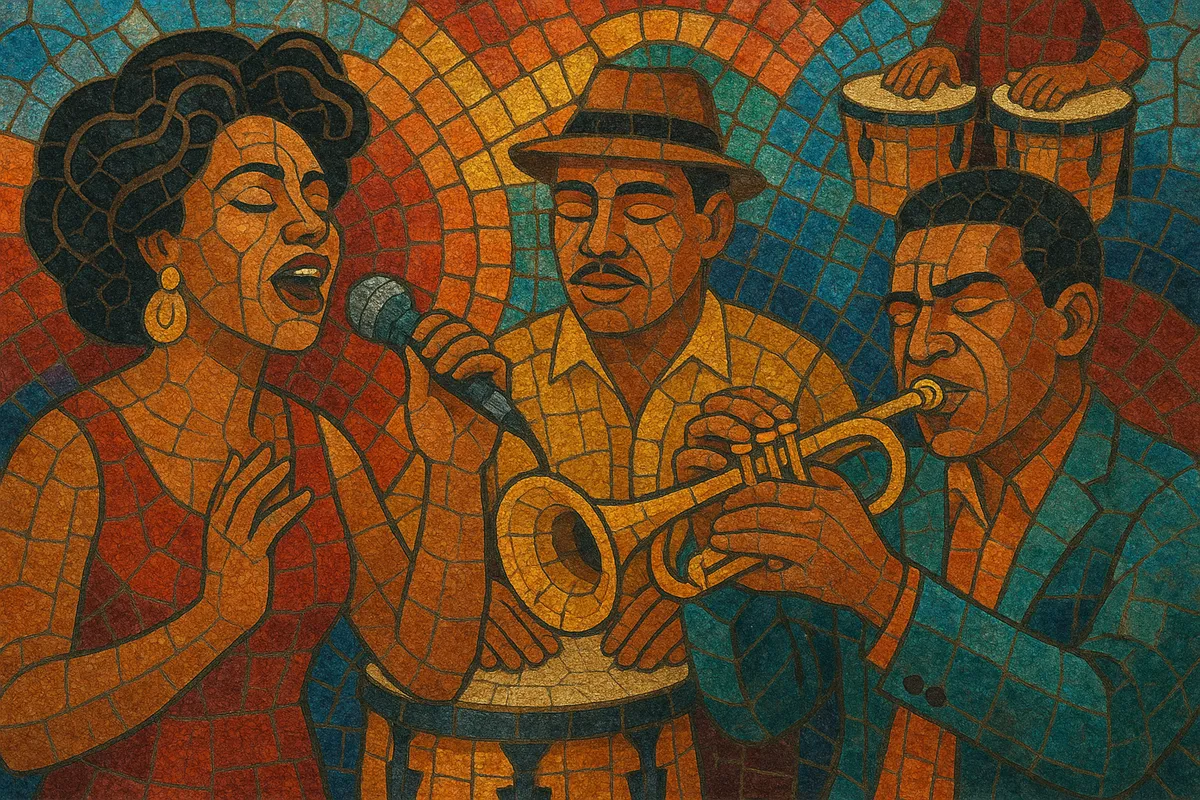Latin soul is a hybrid of African‑American soul/R&B and Afro‑Caribbean dance music that emerged among Nuyorican and other Latino communities in the United States during the mid‑1960s.
It blends English and Spanish vocals, gospel‑tinged harmonies, and backbeat‑driven grooves with Latin percussion, montuno piano figures, and son‑clave patterns. The result is upbeat, dance‑floor‑ready songs with catchy horn riffs, call‑and‑response choruses, and ear‑worm hooks that sit comfortably between soul radio and a Latin social club.
Latin soul coalesced in Spanish Harlem (El Barrio) and other urban Latino enclaves in the United States as bands fused contemporary soul and R&B with Afro‑Cuban and Puerto Rican dance idioms. Young Nuyorican musicians, steeped in doo‑wop, gospel‑inflected soul, and Motown, brought those sensibilities into ensembles that already featured congas, bongos, timbales, cowbell, and montuno‑driven piano. The music’s bilingual flair—often switching between English and Spanish—mirrored the lived reality of its audience.
The style’s commercial peak came in the late 1960s, when Latin soul overlapped with the boogaloo craze. Hits like Pete Rodriguez’s “I Like It Like That,” Joe Cuba Sextet’s “Bang Bang,” and Johnny Colón’s “Boogaloo Blues” crossed over to mainstream radio, propelled by infectious backbeats, handclaps, and shout‑along hooks (e.g., “¡Wepa!”). Independent labels and the burgeoning Fania scene helped codify the sound, packaging it for both Black and Latino dance floors.
By the early 1970s, the industry focus shifted toward salsa, a broader post‑boogaloo synthesis that emphasized harder, brass‑forward arrangements and clave‑centric songwriting. Many Latin soul artists and arrangers contributed directly to salsa’s rise, carrying over vocal phrasing, R&B harmonies, and song forms. Others leaned into smoother, romantic, or funk‑leaning directions, paving the way for Latin disco and later Latin pop.
Though its initial wave was brief, Latin soul’s DNA remains audible in salsa romántica, Latin funk, and Latin R&B. Periodic revivals and reissues in the 1990s–2000s rekindled interest, introducing new generations to the music’s joyous blend of street‑level grit and soulful uplift.


